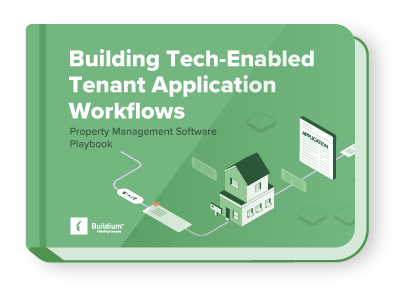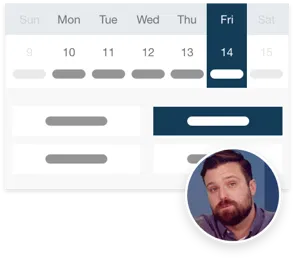Managing properties in communities governed by homeowners associations (HOAs) means balancing resident experience with community rules. HOA violations are a common—and sometimes frustrating—part of that process. Whether you manage one unit or an entire portfolio, understanding how HOA violations work, what causes them, and how to respond effectively can save you time, money, and stress.
For property managers, HOA violations aren’t just another notice in the inbox. They can lead to unexpected fines, strained tenant relationships, and even legal issues if left unaddressed. This guide will help you understand the ins and outs of HOA violations, how they’re enforced, and how to stay ahead of them.
What Is an HOA Violation?
An HOA violation occurs when a homeowner, tenant, or guest breaks a rule established by the homeowners association. These rules are typically outlined in the community’s governing documents, which may include:
- CC&Rs (Covenants, Conditions & Restrictions)
- Community bylaws
- Architectural guidelines
- Resident handbooks or policies
HOA rules are designed to maintain the appearance, functionality, and property values of a shared community. Whether it’s a matter of landscaping, noise, or architectural changes, enforcement is key to consistency—and consistency is what most HOA-governed communities promise their homeowners.
For property managers, violations may feel like a headache, but they serve an important purpose: ensuring the property remains in good standing with the HOA and the broader community.
Common Types of HOA Violations
While every community has its own standards and quirks, there are a handful of violation types that appear across nearly all HOAs. Some are related to aesthetics, others to behavior, and some to safety. Property managers should be familiar with the most common violations, including:
Exterior modifications without approval
Painting, fencing, new doors, or landscaping changes that weren’t approved by the HOA’s architectural review board.
Lawn and landscaping issues
Overgrown grass, dead plants, weeds, or unkempt flower beds.
Trash can violations
Leaving trash or recycling bins on the curb outside of approved pickup hours or failing to store them out of sight.
Parking violations
Parking in restricted areas, using guest spaces improperly, or storing boats, RVs, or inoperable vehicles in driveways.
Pet violations
Having pets that exceed community size or breed restrictions, not picking up after pets, or violating leash rules.
Noise complaints
Loud music, parties, barking dogs, or other disturbances outside of quiet hours.
Holiday decorations
Decorations that are put up too early, stay up too long, or don’t meet community standards.
Use of amenities
Breaking posted rules at pools, clubhouses, gyms, or other common areas.
How Are HOA Violations Issued and Enforced?
HOAs are required to follow specific procedures when issuing violations—and those procedures are typically laid out in the community’s bylaws or rules. The process is meant to be progressive and fair, giving residents a chance to correct issues before penalties escalate.
As a property manager, it’s important to understand the enforcement timeline. Some HOAs are lenient and prefer education first, while others are quick to escalate with formal notices and fines. Knowing what to expect helps you stay one step ahead and respond appropriately in the event of:
Courtesy notices
A first warning or informal letter explaining the violation and requesting correction.
Formal violation notices
A written notice outlining the specific rule broken, required action to resolve it, and a deadline for compliance.
Fines or penalties
If the violation isn’t resolved, the HOA may issue recurring fines, suspend amenity access, or pursue legal action.
Liens or legal escalation
In serious or ongoing cases, the HOA can place a lien on the property or initiate a lawsuit, depending on local laws and governing documents.
Note: Some states require HOAs to offer a hearing or appeals process before issuing fines.
What’s the Role of a Property Manager?
If you’re managing a rental property within an HOA-governed community, you’re often the bridge between the association and the owner—or between the HOA and tenants. While you may not issue violations directly, your involvement is key.
Here’s how property managers typically support the process:
Communicate violations quickly
Pass along violation notices to the property owner and/or tenant promptly to give them time to respond.
Coordinate resolution
Help tenants understand what’s needed, arrange vendor repairs, or handle compliance-related issues directly.
Document everything
Maintain a record of notices, communications, photos, and completed work in case of future disputes.
Educate residents
Set expectations early during move-in about the HOA’s most important rules and any community-specific quirks.
Prevent future issues
Stay familiar with the community’s CC&Rs and work proactively with the HOA to prevent repeat violations.
What Happens If HOA Violations Go Unresolved?
Unresolved violations can escalate quickly—and affect more than just the owner.
Recurring fines
These can accumulate over time and become a financial burden for owners or tenants.
Amenity restrictions
Residents may lose access to shared spaces like pools or clubhouses.
Legal action
In extreme cases, the HOA may pursue court enforcement or place a lien on the property.
Delayed renewals or move-outs
Unresolved violations can delay lease renewals or complicate move-out inspections if physical repairs are required.
Tips for Preventing HOA Violations
Property managers can reduce violations by creating clear processes and maintaining open communication with both tenants and HOA boards.
Distribute HOA rules at move-in
Share a digital or printed copy of key policies and highlight the most common issues.
Create a quick reference list
Offer a 1-page summary of “easy-to-break” rules like trash can placement, noise hours, or parking limits.
Inspect properties regularly
A quick visual check can catch potential violations—especially with landscaping or exterior conditions.
Be responsive
The faster you respond to a notice, the better chance you have of avoiding fines or escalating penalties.
Frequently Asked Questions
Who gets the violation—the tenant or the owner?
HOA violations are typically sent to the property owner. However, if a tenant caused the issue, the owner or property manager is responsible for addressing it with the tenant based on lease terms.
Can tenants appeal an HOA violation?
Only property owners or their official agents can typically appeal a violation. However, property managers can help tenants gather documentation or communicate with the HOA board.
Do all violations lead to fines?
No. Many HOAs give a grace period to fix the issue before any fine is applied. Some violations are resolved with a single courtesy notice.
What if a resident doesn’t agree with the violation?
Most HOAs offer a formal appeals process. Property managers can assist by collecting photos, correspondence, or repair receipts.
Can HOA violations affect property value?
Yes. Ongoing violations or unresolved liens can complicate sales, refinancing, or leasing. A well-managed property in good standing with the HOA is more appealing to future tenants and buyers.
Read more on
